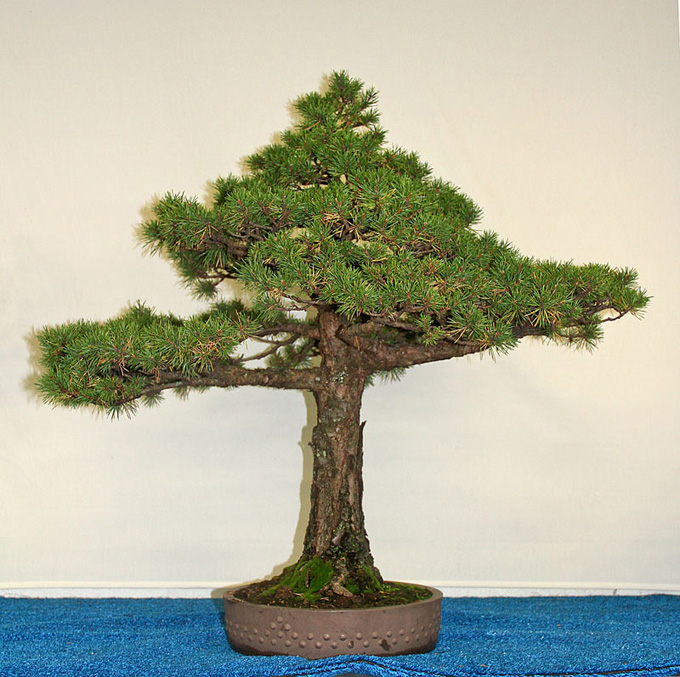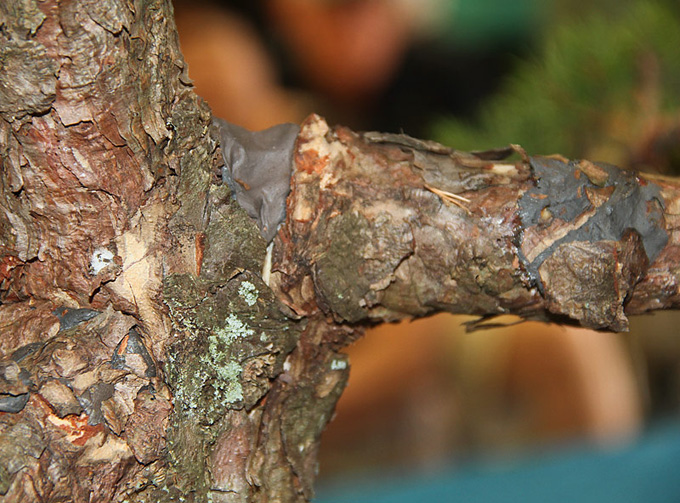 An old RAF Scot’s Pine after restyling by Bill Valavanis. The before photo is below.
An old RAF Scot’s Pine after restyling by Bill Valavanis. The before photo is below.Radical measures
This restyling took place at Bill Valavanis’ Open House last weekend. It provides an excellent lesson in dealing with an old tree with defects that require radical measures to correct.
In Bill’s own words
Here’s part of what Bill has to say about this restyling:
“The first two branches are very heavy and needed to be lowered. Before lowering they were wired so they would not be disturbed after lowering. There are several different methods for lowering the heavy branches. I used a sharp Masakuni bonsai chisel and made a cut on the upper part of the branch. After pulling the branch down, several small stones were inserted into the cut to keep it in the desired position. This was instead of using guy wires. Then Japanese Cut Paste was put in the crack filling in the hold and small rocks. Then, small pieces of bark were pressed into the Cut Paste.” Here’s the whole article.
 Before. Nice trunk and bark, but the branching needs some serious work.
Before. Nice trunk and bark, but the branching needs some serious work. This cut will serve two purposes: first, it will make it easier to lower the branch, and second, it will provide a place to insert stones (yes, stones) to keep the branch from popping back up.
This cut will serve two purposes: first, it will make it easier to lower the branch, and second, it will provide a place to insert stones (yes, stones) to keep the branch from popping back up. After the stone have been inserted, cut paste covers the wound. Bill doesn’t say what the other cut paste (on the right) is for, but you might surmise that it’s for repairing damaged bark (there’s also some on the trunk).
After the stone have been inserted, cut paste covers the wound. Bill doesn’t say what the other cut paste (on the right) is for, but you might surmise that it’s for repairing damaged bark (there’s also some on the trunk). After. You might notice that, in addition to lowering the first branch, the apex has also been lowered. These changes, combined with a general pruning and wiring to better balance and open up the tree, make for a dynamic restyling.
After. You might notice that, in addition to lowering the first branch, the apex has also been lowered. These changes, combined with a general pruning and wiring to better balance and open up the tree, make for a dynamic restyling. Source: Bonsai Bark
0 comments:
Post a Comment